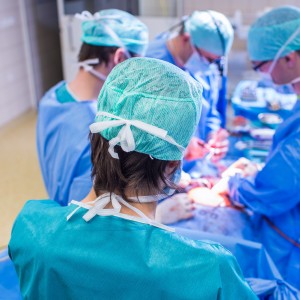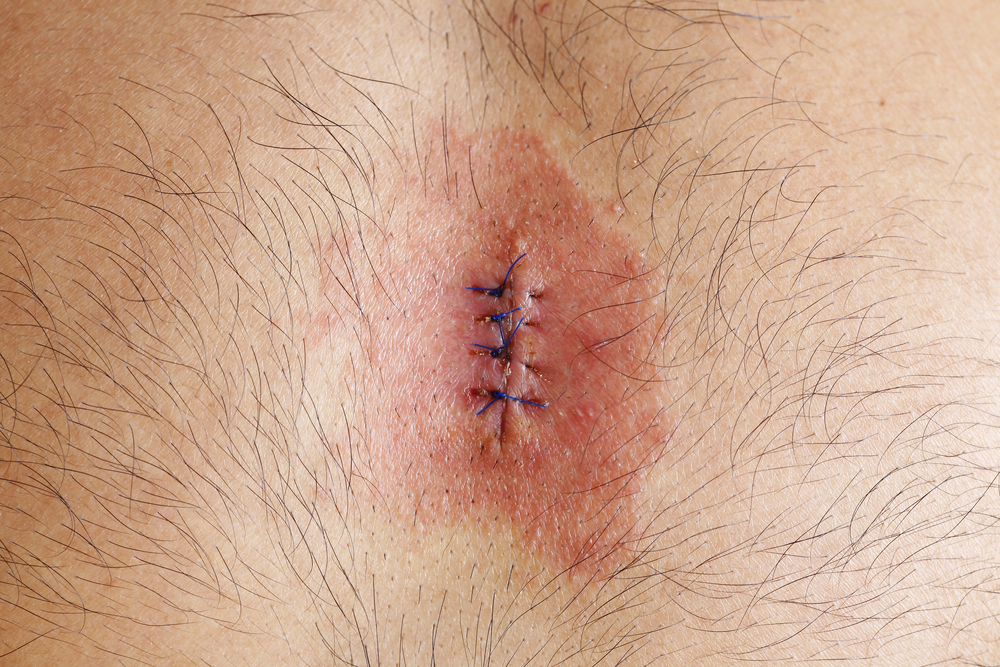 A group of researchers at Centre Hospitalier Universitaire de Besancon in France will be conducting a large, 1000-patient, two-year clinical trial evaluating the prevalence of surgical site infection in patients who undergo a sternotomy for coronary artery bypass graft, valvuloplasty, aortic surgery, or any combination of procedures. While the prevalence of surgical site infection is the main focus of the study, the research team is also interested in the types of bacterial infection at the surgical site.
A group of researchers at Centre Hospitalier Universitaire de Besancon in France will be conducting a large, 1000-patient, two-year clinical trial evaluating the prevalence of surgical site infection in patients who undergo a sternotomy for coronary artery bypass graft, valvuloplasty, aortic surgery, or any combination of procedures. While the prevalence of surgical site infection is the main focus of the study, the research team is also interested in the types of bacterial infection at the surgical site.
The group at Centre Hospitalier Universitaire de Besancon is interested in the prevalence of sternal infection due to a recent increase in surgical site infections following cardiac surgery conducted in their hospital. Although the hospital’s cardiac surgeons adhere to proper surgical techniques, infections still occur during the perioperative period, especially for those patients receiving a sternotomy.
To conduct the study, “Evaluation of Peri-operative Risk Factors for Surgery Site Infection in Cardiac Surgery (PRISCCA),” surgeons will report the rate of surgical site infection one month and three months after surgery during patient follow-ups. The difficult aspect of this trial is that surgeons will likely be unable to determine if infection was induced during the pre-operative, peri-operative, or post-operative periods or as a result of activities performed in the late rehabilitation or surgical discharge stages.
Any number of reasons may explain the risk for developing an infection following a sternotomy for cardiovascular surgery. According to “Risk Factors for Deep Sternal Wound Infection after Sternotomy: A Prospective, Multicenter Study,” 2.3% of patients who undergo coronary artery bypass grafting develop deep sternal wound infections, some of which are due to postoperative inotropic support, reoperation, and a high patient body mass index. The highest risk was attributed to patients who underwent bilateral internal thoracic artery graftings.
Different types of bacteria are present in patients who develop sternal infections. Some are resistance to antibiotic prophylaxis, making the infection difficult to treat. In the study, researchers will determine the bacterial profile of infection sites. They may find that antibiotic prophylaxis is inadequate to treat certain types of bacteria.
The researchers noted that since the rate of surgical site infection is low, two years may not be enough time to see and evaluate 1000 surgical site infections. They require 1000 patients in order to find 12 risk factors that can be associated with sternal infections.
When surgical site infections do occur, current medical procedures rely on surgical debridement, vacuum-assisted closure therapy, flap coverage, and sternal plating. According to “Overview and Management of Sternal Wound Infection,” these options provide a range of options available to surgeons who face the risk of sternal wound infections in their patients.


